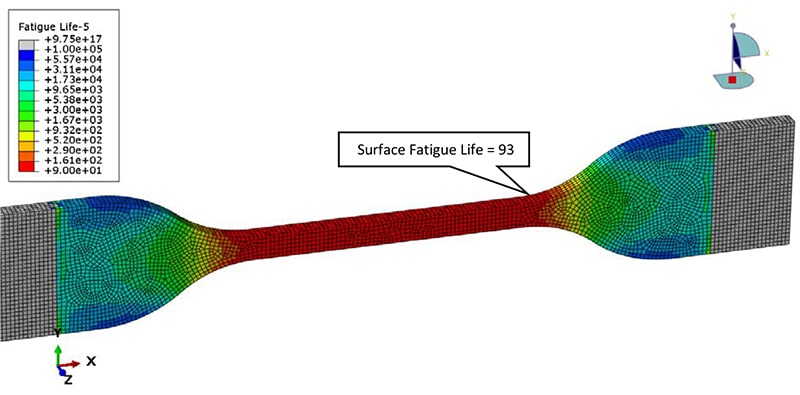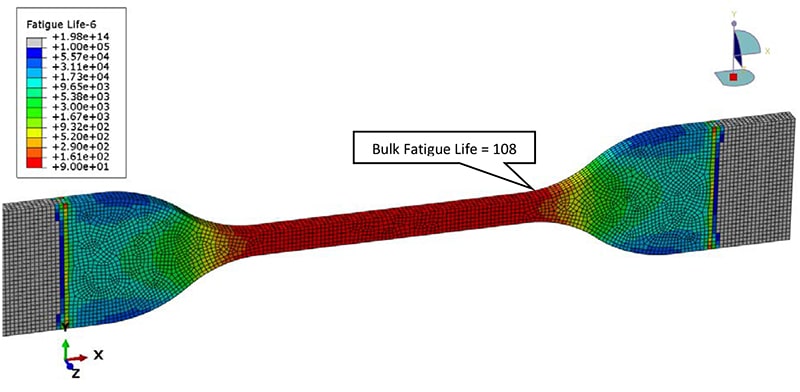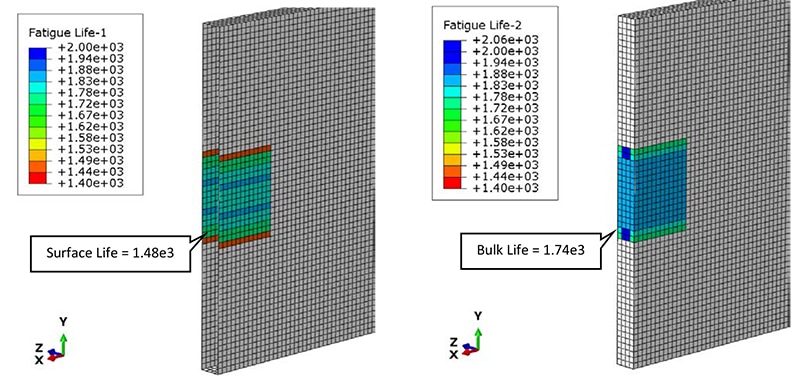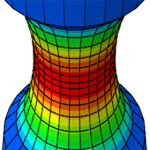Free surfaces are critical in fatigue analysis because cracks in a physical part tend to form and grow fastest on such surfaces. Extra care is required when analyzing free surfaces because typical 3D solid finite elements have their worst accuracy at the free surface (gauss points are not located on the free surface, and hydrostatic pressure profile does not conform adequately to element shape function). Fortunately, the problem is not hard to resolve: free surfaces can easily be skinned with membrane elements. Membrane elements are specially formulated to produce an exact state of plane stress.
Let’s look at fatigue life predictions that have been computed with a skin of membrane elements, and compare them with predictions computed from the underlying 3D solid elements.
To study the differences in fatigue life calculations, three simple loading cases were used: simple tension, planar tension, and bending. For each case the fatigue life is calculated for both the surface and solid elements. The results are shown in the table below.

The fatigue life results show that the shortest life always occurred on the free surface. The life for the solid elements varied from 16% to 25% longer than the surface elements. In each case, the critical failure location was on the surface of the part and in the same location for both the solid and surface calculations. The colored contours of fatigue life are shown below for each of the cases.


Figure 1. Fatigue life on simple tension specimen. Isometric view.

Figure 2. Fatigue life on planar tension specimen. Cross-section view through the center of the specimen.

Figure 3. Fatigue life on bending specimen. Cross-section view through the center of the specimen.
Mesh refinement affects the fatigue life results. A mesh refinement study was performed on the bending case. The mesh refinement study consists of the standard mesh model shown above, a coarse mesh model and a fine mesh model. The number of elements in each model triples with each increase in mesh density. The results are shown below.

Figure 4. Mesh Density Analysis on bending specimen.
This mesh density analysis shows that as mesh density increases, the difference in the bulk and surface results decreases. The bulk and surface results converge to a single value. The amount that solid elements on the surface of the part extend into the interior of the part decreases as smaller elements are used. Since the smaller solid elements have a strain history closer to the surface they more closely match the surface element strains and the life results converge to a single value.
Bottom Line: if you have free surfaces, skin your model with membrane elements for high accuracy results. Refining your mesh at the surface may help somewhat, but skinning with membranes is far more reliable.







